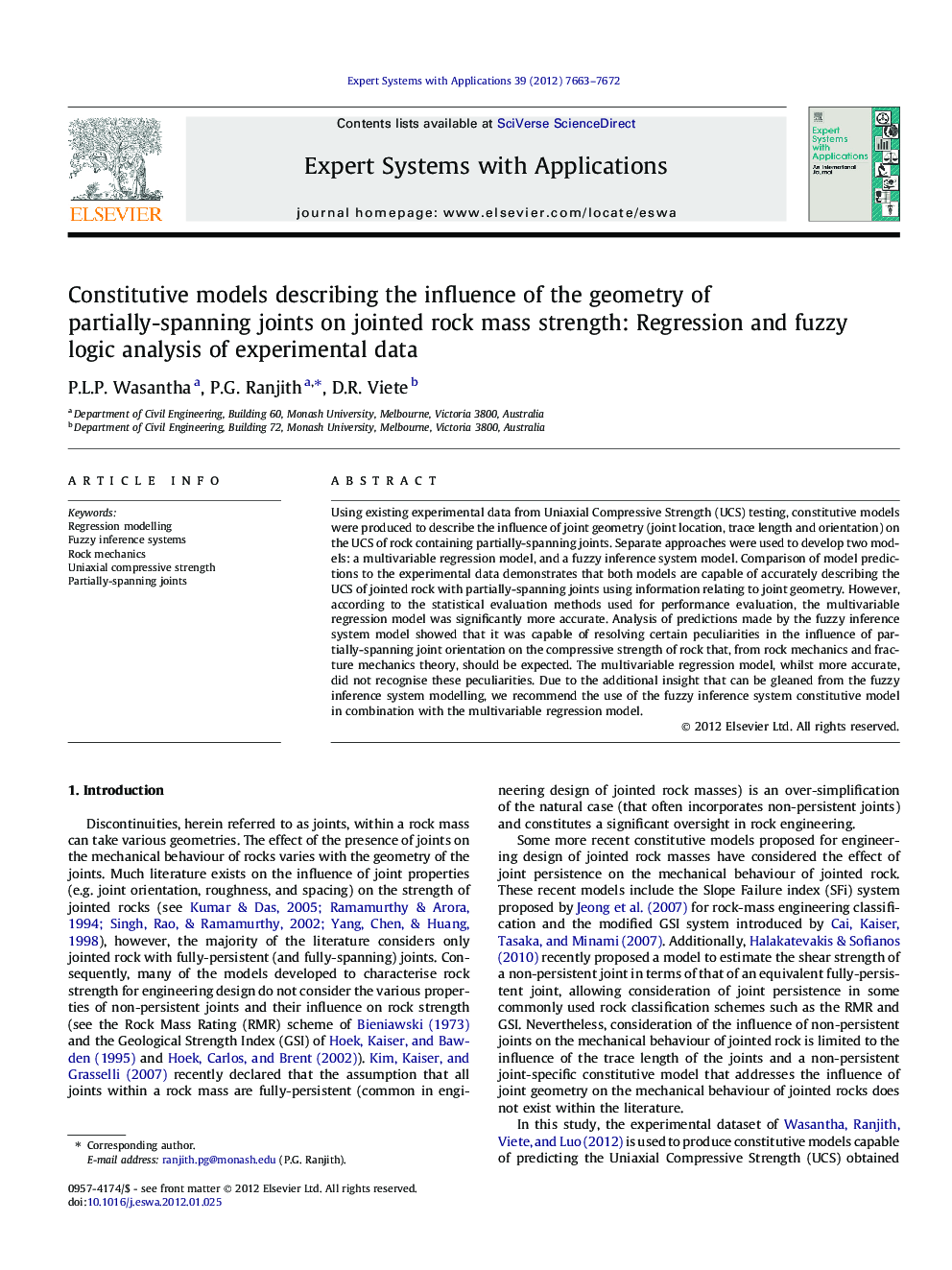| Article ID | Journal | Published Year | Pages | File Type |
|---|---|---|---|---|
| 384104 | Expert Systems with Applications | 2012 | 10 Pages |
Using existing experimental data from Uniaxial Compressive Strength (UCS) testing, constitutive models were produced to describe the influence of joint geometry (joint location, trace length and orientation) on the UCS of rock containing partially-spanning joints. Separate approaches were used to develop two models: a multivariable regression model, and a fuzzy inference system model. Comparison of model predictions to the experimental data demonstrates that both models are capable of accurately describing the UCS of jointed rock with partially-spanning joints using information relating to joint geometry. However, according to the statistical evaluation methods used for performance evaluation, the multivariable regression model was significantly more accurate. Analysis of predictions made by the fuzzy inference system model showed that it was capable of resolving certain peculiarities in the influence of partially-spanning joint orientation on the compressive strength of rock that, from rock mechanics and fracture mechanics theory, should be expected. The multivariable regression model, whilst more accurate, did not recognise these peculiarities. Due to the additional insight that can be gleaned from the fuzzy inference system modelling, we recommend the use of the fuzzy inference system constitutive model in combination with the multivariable regression model.
